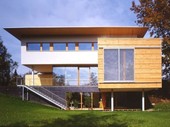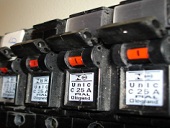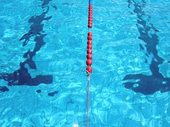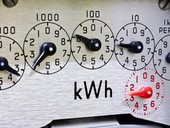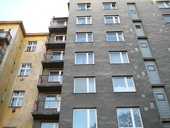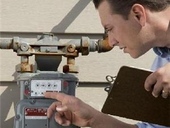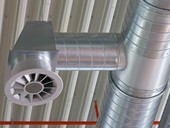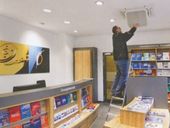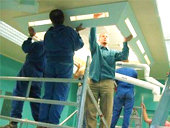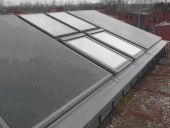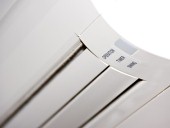Passive houses reduce the need for heating to compensate the heat loss through the building facade and ventilation. But at the same time it increases consumption of the auxiliary energy for circulation pumps and fans. The analytical result can be for many readers quite surprising.
Archiv článků od 6.6.2011 do 9.1.2012
Analyze of passive buildings internal microclimate is described in this contribution. The article focuses on inside state from point of view of thermal -moisture, odour, aerosol or toxic assessment and its influence on inhabitants health. A separate section discribes the inside moisture level during ventilation or passive buildings heating.
The article builds on previous text: Modeling of physical phenomena 1 - evaporation of water level and deals with the design and evaluation of physical phenomena when applying a controlled dehumidification of pool halls, rooms, etc. Design air handling unit is similar to existing solutions used in practice, supplemented by mathematical insights to simulate different states and setting the central dehumidifying equipment. In conclusion it is stated percentage rated the potential savings in the optimal operation of these facilities.
The article deals with the description and solution of physical phenomena taking place during evaporation of water. The topicality of the theme is given a number of built indoor swimming pool and wellness centers at present. In addressing HVAC systems serving these areas, it is necessary to know the various design parame-ters in the interior including the water temperature as the pool temperature and humidity. The article shows the crucial importance of these parameters in a haze of water from the surface.
The development of the project on Energy Performance Contracting is very significant even without any state support till recent time. Last year we can see finaly some support. Ministry of Environment has supported EPC in general by the project in programme of environmental education and promotion. Also Ministry of Industry and Trade endeavours to support first phase of EPC project preparation to select buildings suitable to apply EPC from programme EFEKT from 2012. The methodology for the using of the EPC in the state buildings will be prepared by the end of 2011. By the end of this year several moreover several new tenders will be announced in public sector.
This paper deals with changes in the newly revised technical standard for building thermal performance in terms of ventilation and distribution of air in the building. This paper describes the formulation of requirements, when it is necesary to guarantee a quality of indoor environment and also minimize the energy consumption of ventilation. Attention is also paid to disseminating of air into leaks in the facade or roof.
A common practice in the current housing construction is the use of percussive system of ventilation in which air supply is solved through the window gap. A common feature of such a method of ventilation is totally inadequate supply of ventilation air, which can lead to various undesired air suction holes (electrical outlets, riser, etc.).
Currently, when there are high demands on the airtightness of windows and doors, air intake system can not be solved by windows gaps for ventilation of buildings with a new or reconstructed windows. Ventilation infiltration may be allowed only in buildings where there is no possible replacement of original windows with new tight windows (historical buildings etc.).
The contribution is focused on the systems of cool production for air-condition units. The first part of the contribution deals with the now-a-days cooling requirements of buildings. Then, the frequently used cool production systems are described and compared each other. The absorption cooling systems and the vapor cooling systems are compared. The most frequently used applications of the cooling absorption cycles are presented, namely tri-generation systems and district cooling systems.
In relation with the present discussions on the use of solar energy it is useful to mention one important stage of Czech agriculture - the production of really high-quality roughage. Besides the development of methods of silage and haylage, thirty years ago the researchers looked at final drying of forage in large-scale haylofts using air solar collectors.
The author is concerned with the design of flexible placing and the explanation of resonance effects in a flexible element of one-mass and two-mass placing machines on the basis of theoretical analyses and practical experiences. He highlights problems regarding rotational machines placed flexibly due to high excitation frequencies to be used for significantly lower excitation frequencies. He points out of the necessity of cooperation between the designer of the machine flexible placing and the building safety engineer in cases of light construction structures of floors and ceilings.
The importance of modeling physical phenomena and utility model for the progress of new technologies
The article deals with the description of the progress of established technologies from initial idea to its installation and verification functions in practical operation. The article shows the importance of modeling physical phenomena associated with the issue of air flow, the subsequent acquisition of a utility model for developing technology and economic benefits of this technology in operation.
Nowadays there is a growing interest in quality and high energy saving housing. The following article presents the almost unusual renovation of a terraced building in Denmark. It was expected that after the renovation the building with become CO2 neutral. The last house of a terrace in the twon of Albertslund, Denmakr was chosen for the renovation. It had been built in the 1960's and it is a two story terraced house with a 50m2 footprint.
The article provides information on the activities of the International Centre AIVC (Air Infiltration and Ventilation Centre), which in a new cycle from 2011 to 2013 will focus on the strategy 20-20-20, which oblige EU countries to save energy in buildings. The article explains the structure of the AIVC and its tasks as an international information center, to help not only the AIVC member countries in addressing ventilation in newly built buildings that will have to meet very strict requirements for tightness.
In January I published an article about the upcoming revision of CSN 73 0540-2 Thermal protection of buildings, Part 2: Requirements. I expressed to changes in each individual chapter. Since then there is new development in the standard revision. Some comments by members of the Standardisation Committee No. 43 and by professionals from the April public consultation of the standard were implemented. Some chapters of the standard are nearly unchanged since January, but some have changed in fairly major way.
Motto: To be or not to be. That is the question - William Shakespeare. Every HVAC designer suffers of the dilemma while deciding an optimal design of ventilation or air conditioning system in administrative buildings, similarly as Hamlet suffered. The decision making process is affected with other circumstances, which rather complicate the option thereof. Readers are introduced with a system of cooling beams, which is not very extended (known) in the CR.
zpět na aktuální články
